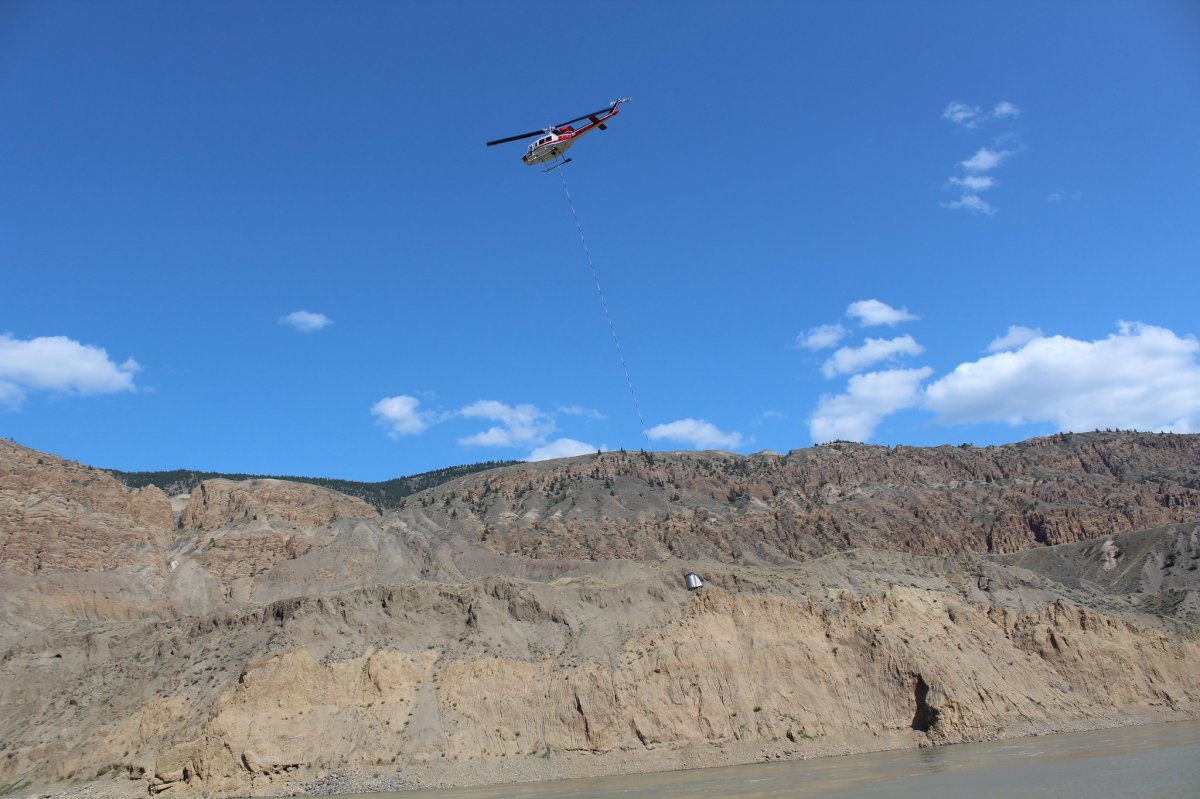Helicopters are carrying nearly 1,500 salmon daily past the landslide that came down nearly two months ago in a remote section of the Fraser River, federal and provincial authorities say.

The Department of Fisheries and Oceans (DFO) and the B.C. government said in their latest update Saturday that the daily haul has helped bring 17,391 fish upstream to spawn.
The landslide, which was first spotted near Big Bar in late June, created a five-metre waterfall that has been largely impossible for salmon to bypass on their own.
WATCH: (Aug. 6) More than 2 million salmon at risk due to Big Bar landslide

Crews have been hard at work ever since to find solutions to the impasse, which threatened to devastate the already threatened chinook and sockeye species that call the Fraser River home.
The helicopters are transporting oxygenated tanks that are filled with salmon in a man-made pool near the slide site, which is connected to the river via a one-way channel.
The salmon are also being collected with a fish wheel brought in by the Kitsumkalum Band, one of several local First Nations assisting the province and the DFO with the operation.
The wheel is catching so many salmon, in fact, that trucks are now being dispatched to help the helicopters carry them past the slide.
“Road building crews and engineers are upgrading a previously identified road from the capture sites to the French Creek area upstream,” Saturday’s update said.
“Archeological values and cultural heritage resources remain a priority during road construction and all other operations.”
Officials say more oxygenated tanks are also being brought in for further helicopter operations, and are set to arrive “within the next day or so.”
In addition, crews are continuing to scale the rocks at the slide site to allow more fish to pass through naturally, while blasting the rocks above to prevent future incidents.
The provincial and federal governments made a joint commitment recently to do everything possible to make sure the millions of salmon are able to reach their spawning grounds.
—With files from Richard Zussman and the Canadian Press




Comments